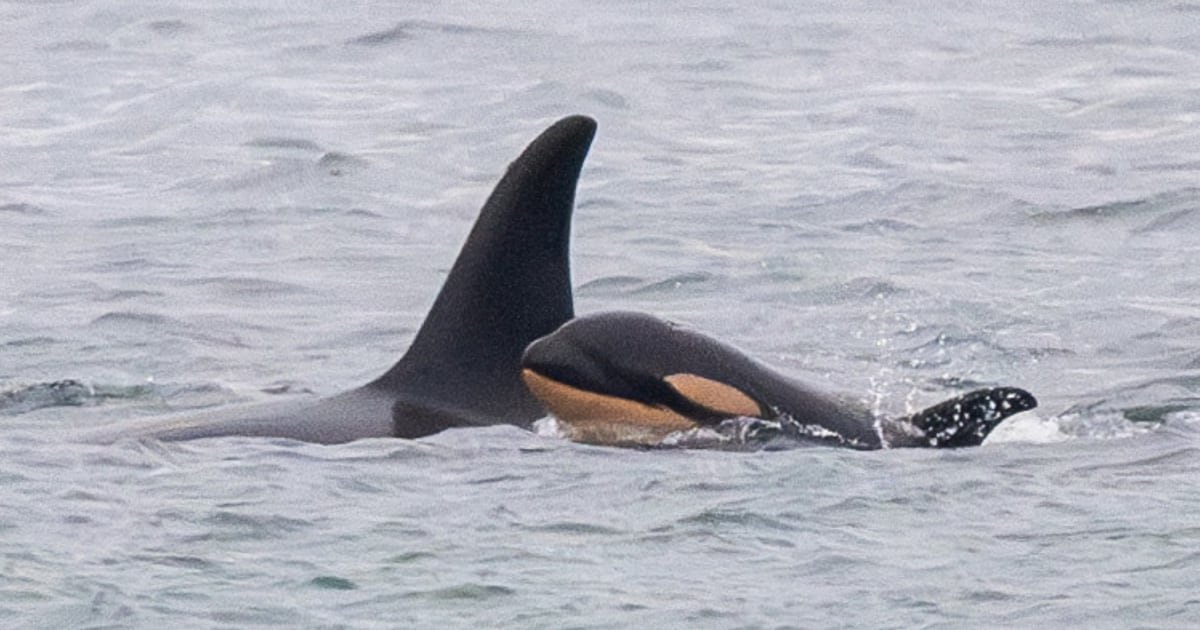The orca that won hearts around the world in 2018 for refusing to let go of her dead calf has given birth to her second baby in the last four years.
The Center for Whale Research said a team of researchers was able to begin observing the newborn girl on Monday, giving the calf the alphanumeric designation J61. The center added that it was “eager” to conduct follow-up observations of the calf.
His mother is known as Tahlequah, designation number J35. Researchers assign animals alphanumeric identifications and, eventually, accompanying nicknames.
The Whale Research Center expressed concern for the health of both J61 and his mother.
“Early life is always dangerous for new calves, with a very high mortality rate in the first year,” the Whale Research Center said Tuesday. “J35 is an experienced mother and we hope she can keep J61 alive during these difficult first days.”
Tahlequah made international headlines in 2018 when she carried her dead newborn calf for 17 days, striking a chord with humans everywhere. By the time he released the baby’s corpse, he had carried the calf 1,000 miles on his head.
Washington Governor Jay Inslee had already signed an executive order that year establishing the Southern Resident Killer Whale Task Force. The goal was to study ways to preserve and restore the local killer whale population.
J61 is the third surviving Tahlequah calf. The oldest, J47 or “Notch”, was born in 2010, and the second, J57 or “Phoenix”, was born in 2020.
Tahlequah and her children live within the J group of orcas, inhabiting waters along the coast between Washington state and Vancouver Island, British Columbia.
The J-pod is one of three groups of killer whales known as “southern resident” killer whales. According to the Orca Conservancy, there are only about 73 orcas in the three groups.
According to NBC affiliate KING of Seattle, a study this year showed that the southern resident pod is declining by about one whale per year and that fewer than two dozen will remain this century.
Orcas are considered an endangered population as they face a variety of threats, including entanglement in fishing nets, dwindling food supplies, human interference, and pollution of their environment. It is estimated that there are only 50,000 orcas in the entire world.
Contaminants in the water are a major concern for the orca population. Toxins from industrial chemicals are not broken down, they are concentrated in the food chain and then stored in the blubber of orcas, according to the Georgia Strait Alliance.
Orca calves are exposed to contaminants through their mothers’ milk, threatening their survival during their first year, the alliance said.
The National Oceanic and Atmospheric Administration said there are “relatively high levels of contaminants” among female southern resident whales and their calves.
“We are concerned about the impact these contaminants could have on this population,” NOAA said in its 2022 capsule health assessment.








